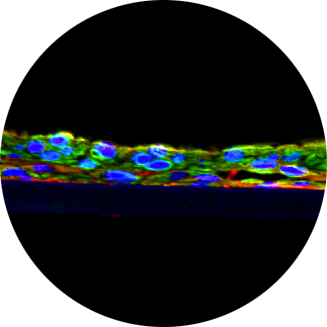In vitro prediction of the performance or equivalence, of different formulations of the same drug substance using a 3D reconstructed human intestinal tissue model: application to generics or drugs in development
- TR Number: 1018
- Authors: R. Barcham, C. Dini
- Materials Tested: Vigabatrin, Sabril, Kigabeq, Caffeine, Metoprolol, Propranolol, Sulfadiazine, Tolbutamide, Amiloride, Atenolol, Famotidine, Chlorothiazide, Amdinocillin, Xamoterol, Ganciclovir, Lucifer yellow
“The BCS (Biopharmaceutics Classification System)-based biowaiver approach is intended to reduce the need for in vivo bioequivalence studies in Human, in order to lower costs of development, increase the market access for generic drugs and from an ethical point of view, avoid unnecessary exposure of healthy volunteers (Humans). These waivers are limited to Class I and Class III drug products, only. If the Caco-2 cells, remain the in vitro gold standard to estimate the absorbed fraction (FA%) of Drug Substance, unfortunately, they cannot be used to evaluate the performance of Drug Products, due to an over sensitivity to excipients. On the contrary, the 3D organotypic human model (EpiIntestinal tissue model), which should theoretically provide access to [FA% x FG%] of a Drug Substance thanks to a metabolic activity comparable to that of the human intestine, has been found, in our hands, to be much less sensitive to excipients, even at high concentrations. For that latter reason, we have decided to explore this 3D organotypic Human model in the view of assessing Drugs Apparent permeability in different formulations

